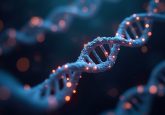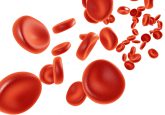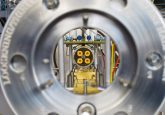Scientists establish biomarker as a target for new therapeutics

Refer a colleague
Scientists at the Northwestern University (NWU; IL, USA) have used statistical analysis to reach the conclusion that a biomarker, called ‘Signal transducer and activator of transcription 3’ (STAT3), can be associated with basal-like breast cancer, a subtype of cancer that is resistant to many forms of chemotherapy. This new breakthrough allows scientists to focus their attention on targeting this biomarker to help improve patient recovery.
The two lead researchers, Curt Horvath, a professor of molecular biosciences in NWU Weinberg College of Arts and Sciences and a professor of microbiology-immunology and of medicine at NWU Feinberg School of medicine, and Robert Tell, a postdoctoral fellow in Horvath’s laboratory, used computational and bioinformatics techniques and compared the patterns of gene expression in both basal-like and luminal cancer.
The results showed that STAT3 activity correlates with clearly visible patterns of common gene expression – where certain genes are turned on and certain genes are turned off – in the basal-like cancers, which were not seen in the luminal cancers.
This opens up a new potential avenue, and highlights that STAT3 inhibitors may prove far more effective for patients with basal-like cancers than for those with luminal cancer. Basal-like cancers encompass the often fatal and highly aggressive form called triple negative cancer, whilst luminal cancers are often low grade and tend to grow fairly slowly.
Horvath and Tell’s research is the first reported study to compare breast cancer subtypes associated with STAT3. Their analysis compiled data from over 800 breast cancer patients across the USA.
STAT3 is an obligatory mediator of cytokine and growth factor signals, helping with bodily processes such as immunity and inflammation. Horvath and Tell identified the many genes that were expressed, which had different roles that were consistent with that of STAT3 as they were highly representative of the immune and inflammation processes.
Horvath, as reported by NWU, stressed that the research produced statistical analysis and the findings should be evaluated by clinical experiments. But both scientists were hopeful that this new lead will encourage other researchers into the discovery of a STAT3-inhibiting drug.
Source: Biomarker in an aggressive breast cancer is identified; Tell RW, Horvath CM. Bioinformatic analysis reveals a pattern of STAT3-associated gene expression specific to basal-like breast cancers in human tumors. Proc. Natl Acad. Sci. USA DOI:10.1073/pnas.1404881111 (2014) (Epub ahead of print).
Please enter your username and password below, if you are not yet a member of Bioanalysis Zone remember you can register for free.





